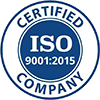Exploring the Precision of CNC Multi-Axis Turning
Created at : Sep 28, 2023
In the world of manufacturing, precision and efficiency are paramount. One technology that has revolutionized the machining industry is Computer Numerical Control (CNC) multi-axis turning. This advanced machining process allows manufacturers to create intricate and highly accurate components with ease.
What is CNC Multi-Axis Turning?
CNC multi-axis turning is a sophisticated machining technique that involves the rotation of a workpiece while a cutting tool moves along multiple axes to remove material and shape the part. Unlike traditional lathe machining, where only two axes (X and Z) are involved, multi-axis turning machines can move the cutting tool along several axes simultaneously, often including X, Z, Y, and additional rotational axes such as B and C. This added flexibility enables the production of highly complex and precise components.
How Does CNC Multi-Axis Turning Work?
- Workpiece Setup: The process begins with securing the workpiece in the lathe's chuck or collet. The workpiece rotates around its central axis.
- Toolpath Programming: A computer-aided design (CAD) model of the desired part is created, and this model is then converted into a CNC program. The program defines the toolpath, specifying the precise movements the cutting tool must make to shape the workpiece.
- Tool Selection: Different cutting tools, such as drills, end mills, and turning tools, are selected based on the specific machining operations required.
- Multi-Axis Machining: The CNC machine uses its multiple axes to position and move the cutting tool in relation to the rotating workpiece. This allows for complex shapes and features to be machined with great precision.
- Continuous Monitoring: Throughout the machining process, sensors and monitoring systems ensure that everything is proceeding according to plan. Any deviations from the programmed parameters can be corrected in real-time.
Advantages of CNC Multi-Axis Turning
- Precision: One of the primary advantages of CNC multi-axis turning is its ability to produce intricate and highly accurate components. The simultaneous movement of multiple axes allows for complex geometries and tight tolerances to be achieved.
- Reduced Setup Time: CNC machines can quickly switch between different tools and machining operations, reducing setup times and increasing overall efficiency.
- Increased Productivity: Multi-axis turning machines are capable of performing multiple operations in a single setup, resulting in faster production cycles and reduced lead times.
- Versatility: CNC multi-axis turning machines can work with a wide range of materials, including metals, plastics, and composites. They can also produce a variety of part geometries, from simple to highly complex.
Applications of CNC Multi-Axis Turning
- Aerospace Industry: CNC multi-axis turning is widely used in the aerospace industry to manufacture complex components like turbine blades, engine parts, and landing gear components.
- Medical Devices: Precision is critical in the production of medical devices, and multi-axis turning is used to create intricate components for devices such as surgical instruments and prosthetic limbs.
- Automotive Manufacturing: Many automotive parts, including engine components and transmission parts, are produced using CNC multi-axis turning to ensure high precision and quality.
- Electronics Industry: The electronics industry relies on multi-axis turning for the production of connectors, sockets, and other intricate parts for electronic devices.
Conclusion
CNC multi-axis turning represents a remarkable advancement in machining technology, allowing manufacturers to create highly precise and complex components efficiently. Its versatility and ability to produce intricate parts have made it a crucial tool in various industries, from aerospace to healthcare and electronics. As technology continues to evolve, we can expect further innovations in CNC multi-axis turning, pushing the boundaries of what is possible in precision machining.
